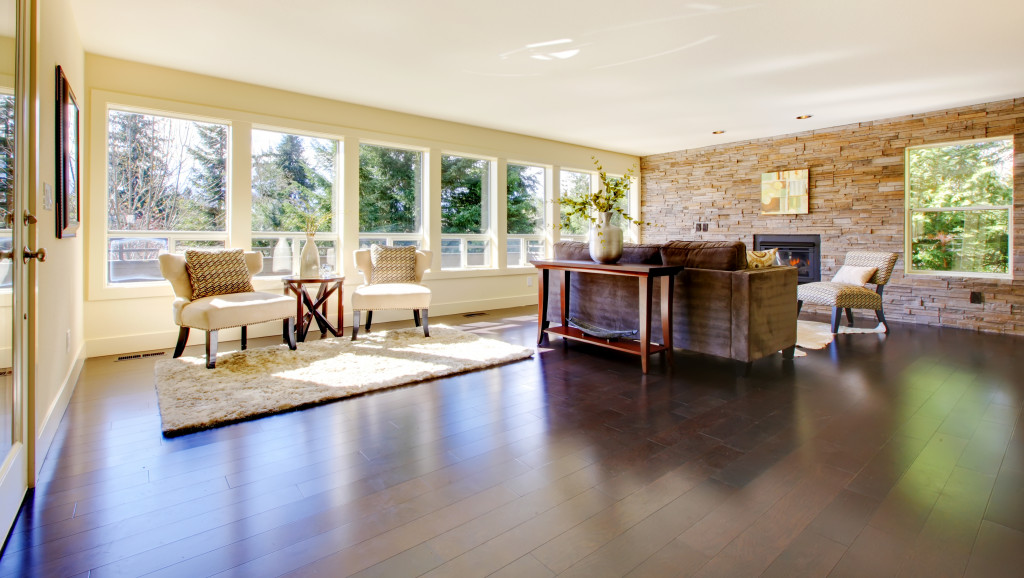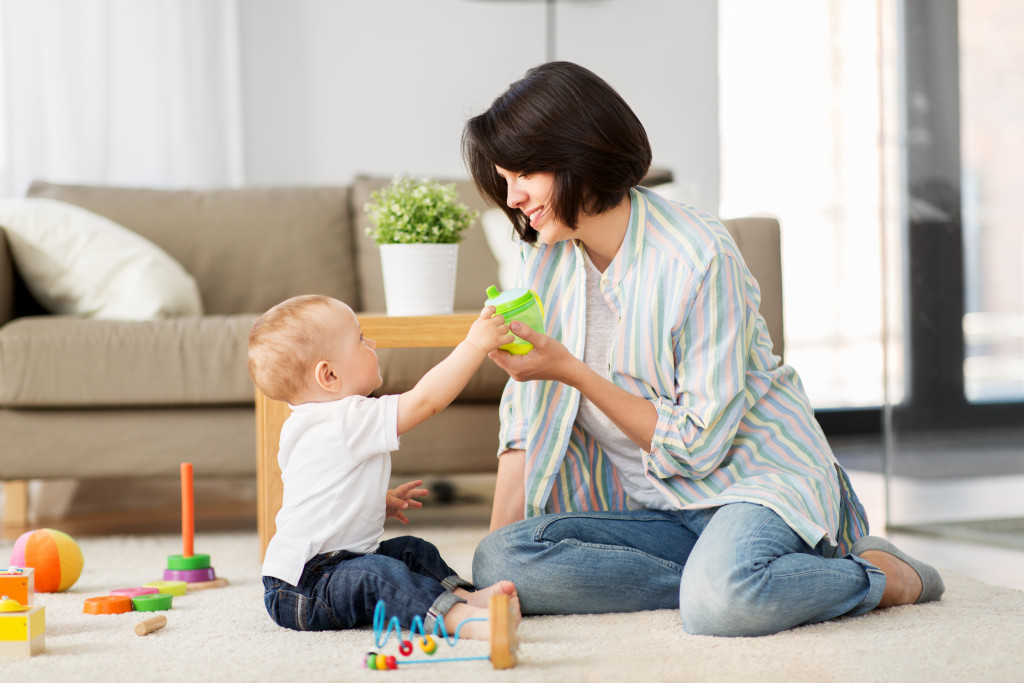- Kids aged 0-5 have double the energy of adults and need at least 3 hours of physical activity per day to support their motor and cognitive development.
- Decluttering, organizing, and limiting what comes into the home are critical steps in child-proofing a house.
- An open layout design with clear sightlines increases visibility, allowing parents/caregivers to supervise children better while they play.
- Covering or removing sharp surfaces such as tables, furniture, stairs, and glass helps prevent accidental injuries caused by tripping or contact with hazardous objects.
Kids are bundles of energy that can often put adults to shame. Research has shown that children aged 0-5 have twice the energy of adults, as measured by their metabolic rate per kilogram of body weight. Studies also suggest that this high energy level is necessary for their motor and cognitive development, with their ability to learn new skills and concepts increasing in line with the amount of engaged physical activity.
To give some context to how much energy kids have compared to adults, research conducted by the American Academy of Pediatrics found that preschoolers (aged 3-5) should be engaging in at least three hours of physical activity daily. This figure considers light exercises such as walking or hopping combined with more strenuous activities such as running or playing sports and games. On the other hand, research shows that adults require only 30 minutes per day for optimal health benefits – highlighting how much energy kids have!
Unfortunately, your kid’s energy might mean that the house is more dangerous to them than you’d like. But there are several essential steps parents and caregivers can take to prepare their home environment for playful children. Here are a few ways to child-proof your home.
Declutter and Organize

Clutter and unorganized household items can make the home dangerous for kids, as they can be a potential source of accidents and injuries. Cluttered areas in the house are visually hazardous and create physical hazards, making it more likely that kids will be injured while playing. This is because clutter creates tripping hazards, such as stray toys, stacks of books or magazines, boxes on the floor, or other objects that children can trip over. It also creates hidden dangers like electrical cords that may go unnoticed until it’s too late.
In addition to tripping hazards, clutter can hide sharp objects such as scissors or knives, a choking hazard for young children and a risk of serious injury if handled by an older child. Other household items that can be dangerous when left out include cleaning products, medications, and pills, plastic bags (which pose a risk of strangulation), laundry detergents containing toxins or bleach, which can cause severe skin burns if touched without proper protective clothing, and even plants which can be poisonous to small children if ingested.
Decluttering and organizing household items will be a daily responsibility, but you can find ways to make the chore efficient. The first step is to create an area or room in the house to store all the items that can be dangerous to children. This could be a closet, basement, or even a locked cabinet. Be sure to securely fasten any furniture and shelves with L brackets or other hardware, so they don’t tip over if your child climbs on them.
Next, identify areas of the home where clutter is most likely to accumulate and make an effort to clean those areas up regularly. Investing in bins or baskets will help you stay organized while freeing up floor space for your kids to play safely and away from potential hazards. Finally, think about limiting what comes into your home by not buying too many toys for your child that are only used once before being forgotten.
Open Layout Design

Designing your home layout to be open and free of barriers will make it easier to keep an eye on children while they play. An open floor plan allows you to watch your children better so they don’t wander off or injure themselves in hidden spaces.
Maintaining sightlines throughout your home can also help prevent accidents by allowing you or other adults to spot potential hazards quickly. If certain areas require additional lighting, such as staircases or hallways, consider installing motion-activated lights that turn on when someone enters the room. This type of lighting is beneficial during nighttime supervision when fewer people are around to monitor activity. It also helps promote independence since kids no longer need help navigating an area.
Cover or Remove Surfaces with Sharp Edges
Children will be playful, but they might not always be careful. Covering or removing any household items with sharp edges is essential to keep your child safe. Here are a few home features that require attention:
Tables
The dining, coffee, and other tables around the house should be covered or padded with foam or different fabrics. Remove sharp edges by rounding them off, and protect corners with corner guards to prevent scratches or bumps.
Furniture
Any furniture in the home should have soft corners, no sharp edges, and safe handles that won’t pinch your child’s fingers. Chairs, drawers, and cabinets should be designed with safety in mind.
Stairs
Kids are likely to climb up and down stairs frequently, so make sure they are adequately secured at all times. Install gates at the top and the bottom of the stairs if possible, or use ropes and anchors if necessary. Make sure there are no loose carpets on the steps that could cause a child to slip. Of course, every step could be a threat. Stair nose molding solutions will provide your children with an extra layer of protection.
Glass
Glasses will be a hazard due to their fragility. Consider replacing any glass doors, windows, and other surfaces in the home with tempered glass products (safety glass), which will be more resistant to breaking even if your child runs into them, as well as being fire-resistant and shatterproof.
Final Thoughts
By following these essential steps for making the home safe for playful kids, you can ensure that your child’s energy is channeled safely and productively – promoting fun playtime without any risks. With the right mix of supervision, organization, and smart design features, playtime at home can remain both enjoyable and safe!

